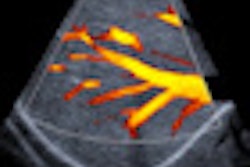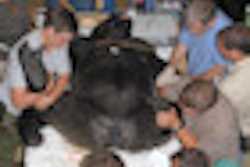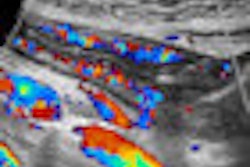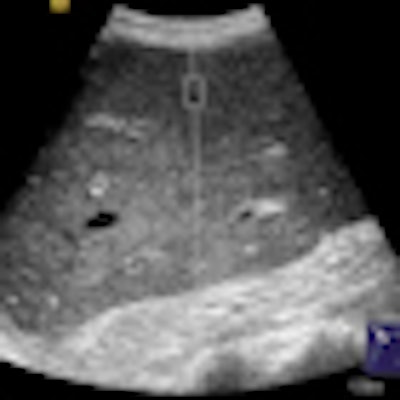
Acoustic radiation force impulse (ARFI) is a new elastographic method that allows rapid assessment of liver fibrosis that seems free of adverse events, is comfortable for the patient and sonographer, and has a mean duration of around five minutes, according to Dr. Ioan Sporea, head of the department of gastroenterology and hepatology at the University of Medicine and Pharmacy of Timisoara in Romania.
 At the WFUMB congress, Dr. Ioan Sporea will speak about education in Romania.
At the WFUMB congress, Dr. Ioan Sporea will speak about education in Romania.
"ARFI measurements can be made with a device integrated into an ultrasound machine, which already exists in some ultrasound laboratories. Immediately after an ultrasound evaluation of the liver, ARFI measurements can be obtained so that information regarding the severity of liver fibrosis is available on the spot, without having to buy another machine," he noted, adding that the examination can be performed on patients with ascites and those in whom liver stiffness measurement by transient elastography (TE) could not be obtained.
The value of ARFI for fibrosis assessment in chronic hepatitis and cirrhosis has been shown in several studies comparing the correlation between noninvasive stiffness measurement and liver biopsy, said Sporea, who will be presenting on this topic at the World Federation for Ultrasound in Medicine and Biology (WFUMB) congress, to be held in Vienna from 26 to 29 August. Research on the use of ARFI in prostate imaging has shown that the technique is capable of outlining zonal anatomy in the prostate and detecting malign lesions. Studies on nerve imaging and needle guidance also have been performed with ARFI.
"One hot topic is this method's validation for the assessment of fibrosis in chronic hepatitis. Also, ongoing studies are evaluating ARFI for the assessment of diffuse thyroid pathology and of hepatic neoplasms and thyroid nodules," he noted.
The technique uses high-energy, focused acoustic pulses and conventional diagnostic sonography methods to measure tissue elasticity. An acoustic "push" pulse is produced by the ultrasound probe and generates shear waves that are propagated into the liver. Using image-based localization and proprietary implementation of ARFI technology, shear-wave speed may be quantified and, in precise anatomical regions, focused on a region of interest, with a predefined size provided by the system.
The force impulse causes displacement of the tissue, and the time scale of this response is much slower than that of the acoustic propagation. The interaction of sound with tissue can be used to receive additional information about the diagnosed region, beyond what is normally provided in an ultrasound image. The velocity is proportional to the tissue stiffness, with faster wave progression occurring through stiffer material, and is measured in meters per second, Sporea stated.
For the WFUMB congress, he recommends the following sessions: "Is there or will there ever be a role for elastography to evaluate the GI tract?" which deals with new and alternative methods of ultrasound imaging, and "Abdominal 2 -- ARFI" which will provide an update on all possibilities and hot topics in the field of ARFI. Sporea will also take part in an educational session and give insights into activities in Romania.
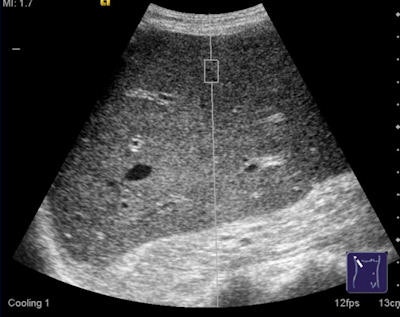 An ARFI examination can be performed on patients with ascites and those in whom liver stiffness measurement by transient elastography could not be obtained. Image courtesy of Dr. Ioan Sporea.
An ARFI examination can be performed on patients with ascites and those in whom liver stiffness measurement by transient elastography could not be obtained. Image courtesy of Dr. Ioan Sporea.David Zizka is a communications specialist in the European Society of Radiology's (ESR) press office.
Note: This article was originally published in the WFUMB newsletter.




